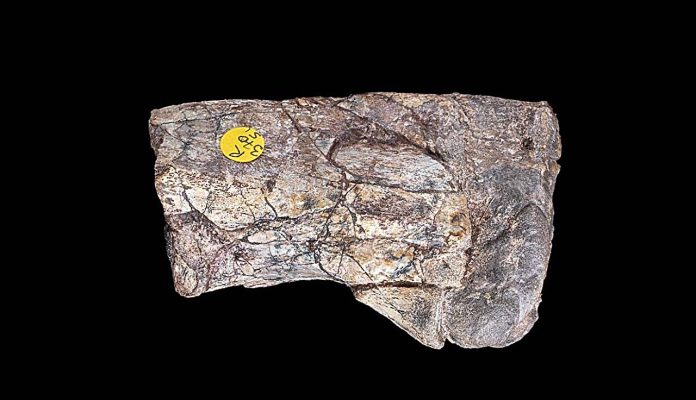
A fossilized leg bone found in Africa is reshaping our ideas about the size of the first dinosaurs.
The 225-million-year-old bone belonged to a mysterious reptile group called silesaurs, which lived during the Triassic Period and may have been early dinosaurs or very close relatives.
This discovery suggests that the earliest dinosaurs might have been larger than scientists previously believed.
The story of this bone goes back to 1963, when British researchers on an expedition in what is now Zambia found a fossil femur, or thigh bone.
At the time, their focus was on mammal-like reptiles, so the bone was set aside and forgotten for decades. It wasn’t until the 2010s that scientists realized it was one of the first known bones from a silesaur.
Silesaurs are a group of dinosaur-like reptiles that lived between 240 and 200 million years ago. They were only recognized as a distinct group in 2010.
One well-known species, Silesaurus, was about two meters long and may have eaten insects or plants.
There is ongoing debate about whether silesaurs were true dinosaurs or just closely related to them, but either way, they hold important clues about the earliest days of dinosaur evolution.
Jack Lovegrove, a Ph.D. student and lead author of the new study, believes that the large size of this femur supports the idea that the first dinosaurs may not have been small as once thought.
Instead, some early dinosaurs and silesaurs might have actually shrunk over time. If more large specimens are found, it could mean that early dinosaurs started big, and some groups later became smaller.
The research, published in Royal Society Open Science, also shows how valuable museum collections can be.
The bone had been stored at the Natural History Museum in London for over 50 years before its importance was recognized. It serves as a reminder that even forgotten fossils can lead to major discoveries.
Zambia’s Triassic rocks are full of silesaur fossils, including one named species, Lutungutali sitwesis, and many other leg bones that remain unidentified. Some femurs are twice as long as others, which could mean different species lived in the same area—or it could just reflect different growth stages of a single species.
The bone in this study shows growth patterns different from others in the region, hinting that several species of silesaurs may have coexisted.
If that’s true, it changes our view of Triassic ecosystems. Silesaurs may not have been minor players after all. In fact, they could have been the largest herbivores in some regions, possibly taller and longer than the previously dominant dicynodonts.
As scientists continue to study old bones and search for new ones, they hope to better understand how dinosaurs evolved and how these ancient animals once ruled their world. This forgotten leg bone may be one big step toward solving one of paleontology’s oldest mysteries.



